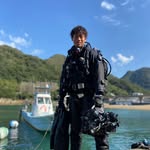
Javier Murcia Requena
Underwater photographer
Marelux Ambassador
Oceanografic Ambassador
Photographic awards: European Wildlife Photographer of the Year
Recent Posts

Cuando los pequeños caballitos son liberados por el macho suelen nadar unas semanas en la masa de agua. El tiempo exacto no se sabe con precisión, pero normalmente suele ser un par de semanas. Durante ese periodo, coincidiendo con su crecimiento, van buscando pequeños objetos flotando en la masa de agua para agarrarse a ellos. Normalmente les gusta las hojas de Cymodocea nodosa. En otras ocasiones se pueden agarrar a cualquier elemento que flote en la masa de agua, desde un pequeño trozo de plásticos hasta una pluma de ave marina o un trozo de alga. Desde luego se trata de un comportamiento poco estudiado. Se trata de una buena manera de colonizar nuevos territorios debido a la lentitud de estos peces para recorrer grandes distancias. Aquí os dejo un artículo de la prestigiosa revista Gatopardo en la cual he podido colaborar con varias de mis fotografías y con un texto formidable de mi compañero Samuel Mayo. Se trata de una historia de supervivencia, sobre el icono indiscutible del mar Menor: el caballito en el Mar Menor. Lee la historia completa en gatopardo.com: https://www.gatopardo.com/articulos/gutulatus-radiografia-de-una-foto When the small seahorses are released by the male, they usually swim for a few weeks in the body of water. The exact time is not known with precision, but it is usually a couple of weeks. During this period, coinciding with their growth, they go looking for small objects floating in the body of water to hold on to. Normally they like the leaves of Cymodocea nodosa. On other occasions they can hold on to any element that floats in the body of water, from a small piece of plastic to a seabird feather or a piece of algae. Of course, this is a little-studied behaviour. It is a good way to colonise new territories due to the slowness of these fish to travel long distances. Here I leave you an article from the prestigious magazine Gatopardo in which I have been able to collaborate with several of my photographs and with a formidable text by my colleague Samuel Mayo. It is a story of survival, about the undisputed icon of the Mar Menor #javiinthesea #javiermurcia #marelux #marmenor
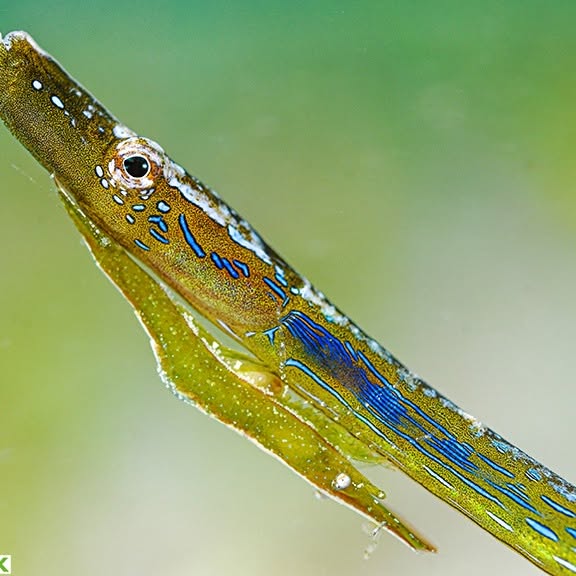
Nerophis ophidion o agujón o alfiler es posiblemente el signátido más bello del Mediterráneo (a excepción del caballito de mar) y uno de los más raros (y menos conocidos). Para empezar, y a diferencia de la mayoría de peces del planeta, las hembras son más bellas y vistosas que los machos. Ellas presentan unas líneas azul cobalto que recorren parte del cuerpo y de la cabeza, con un fondo amarillo verdoso muy característico que las ayuda a mimetizarse en su hábitat favorito: las praderas de fanerógamas marinas como Cymodocea y Zostera. Se mimetizan a la perfección hasta el punto de que algunos crustáceos se agarran sobre su cuerpo pensando que son hojas de fanerógamas. En la primera imagen se puede apreciar a una hembra adulta de Nerophis ophidion con una gamba de verde (Hippolyte inermis), y en la segunda junto a una aguja de río (Syngnathus abaster). Por cierto, ambas imagenes tomada en la laguna costera del Mar Menor (primera cita para esta especie). Nerophis ophidion or the pinfish is possibly the most beautiful syngnathid in the Mediterranean (with the exception of the seahorse) and one of the rarest (and least known). To begin with, and unlike most fish on the planet, the females are more beautiful and showy than the males. They have cobalt blue lines that run along their body and part of their head, with a very characteristic greenish-yellow background that helps them blend in with their favourite habitat: seagrass meadows such as Cymodocea and Zostera. They blend in perfectly to the point that some crustaceans cling to their body thinking they are seagrass leaves. In the first image you can see an adult female of Nerophis ophidion with a green shrimp (Hippolyte inermis), and in the second one next to a river needlefish (Syngnathus abaster). By the way, image taken in the coastal lagoon of the Mar Menor (first record for this species).#javiinthesea #javiermurcia #marmenor #marelux
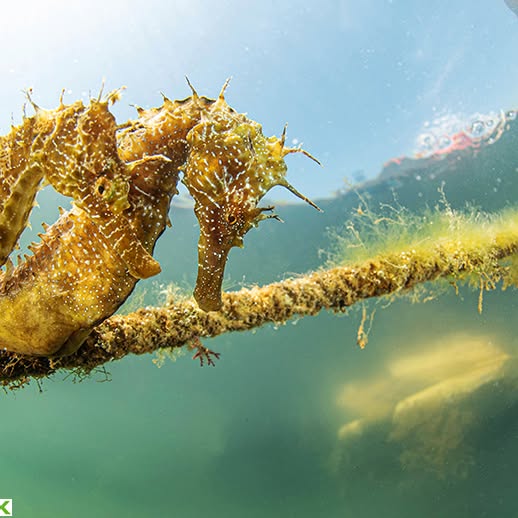
Aquí os dejo mi último artículo sobre el Mar Menor en la prestigiosa revista National geographic. La foto que abre el artículo es de una pareja de caballitos de mar (Hippocampus guttulatus) Durante la época de reproducción de los caballitos primero se forman las parejas, después se realiza una serie de cortejos que pueden durar varios minutos y suelen ser diarios, en ellas el macho y la hembra se entrelazan con la cola, danzan, nadando desde el fondo a la superficie simultáneamente, se frotan y cambian de color, sobre todo el macho. Tras estos lances, y al cabo de varias semanas, la pareja se posiciona una frente a otra con los vientres pegados, y la hembra, a través de su cloaca y con ayuda de una papila genital, traspasa sus huevos a la bolsa del macho, la cual hincha con rapidez antes del apareamiento para mostrar la abertura más grande y patente y así impresionar a la hembra. Here is my latest article about the Mar Menor in the prestigious National Geographic magazine. The photo that opens the article is of a pair of seahorses (Hippocampus guttulatus) During the seahorses' breeding season, they first form couples, then perform a series of courtship displays that can last several minutes and are usually daily. During these displays, the male and female intertwine their tails, dance, swim from the bottom to the surface simultaneously, rub against each other and change colour, especially the male. After these displays, and after several weeks, the pair position themselves facing each other with their bellies pressed together, and the female, through her cloaca and with the help of a genital papilla, transfers her eggs to the male's pouch, which he inflates rapidly before mating to show the largest and most obvious opening and thus impress the female. #javiinthesea #nationalgeographic #marmenor #javiermurcia #marelux @balkyocean
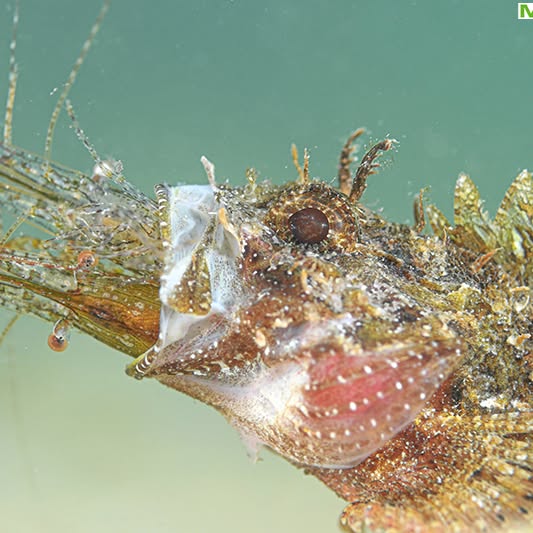
De dos en dos…los peces de la familia scorpaenidae son grandísimos depredadores. Scorpaena porcus es un gran depredador que caza al acecho. Su extraordinario mimetismo lo hacen un animal casi invisible, gracias a su forma, color y expansiones dérmicas. Cuando una presa pasa cerca de sus fauces se produce el ataque, que suele durar centésimas de segundos y con su enorme boca es capaz de succionar y tragar presas de un tamaño considerable, o incluso tragarse dos presas, como se puede observar en la imagen. En esta ocasión los desafortunados son dos camarones. Two by two… the fish of the scorpaenidae family are great predators. Scorpaena porcus is a great predator that hunts by lying in wait. Its extraordinary camouflage makes it an almost invisible animal, thanks to its shape, colour and dermal expansions. When a prey passes near its jaws, the attack occurs, which usually lasts hundredths of a second and with its enormous mouth it is capable of sucking and swallowing prey of a considerable size, or even swallowing two prey, as can be seen in the image. On this occasion, the unfortunate ones are two shrimps. #javiinthesea #javiermurcia #marelux #mediterraneansea #marmediterraneo
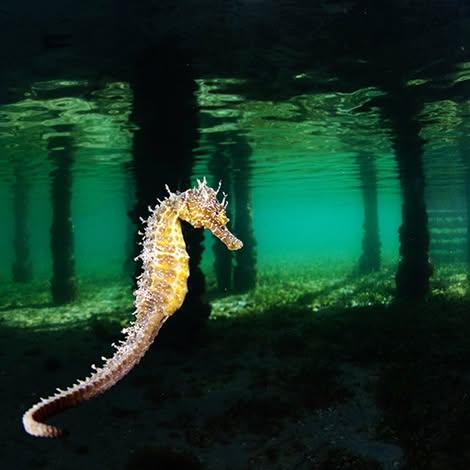
Nuevo libro sobre fauna y flora de la laguna costera del Mar Menor. Los balnearios de madera del Mar Menor son un símbolo indiscutible de la laguna y probablemente el mejor ejemplo de elemento arquitectónico con carácter medioambiental de cuantos se han implantado a lo largo de toda su ribera. Son un oasis de vida, zona de guardería de especies comerciales y motivo de inspiración para numerosos fotógrafos. Sumergirse allí es sinónimo de biodiversidad, es como bucear en una cueva repleta de vida, donde las especies tiñen de colores cada centímetro cuadrado de este ecosistema único y exclusivo de la península ibérica. Os dejo varias imágenes que aparecen en el libro, y la última: la portada. New book about the species that live under the spas of the Mar Menor. The wooden spas of the Mar Menor are an indisputable symbol of the lagoon and probably the best example of an architectural element with an environmental character of all those that have been implanted along its entire shore. They are an oasis of life, a nursery area for commercial species and a source of inspiration for numerous photographers. Diving there is synonymous with biodiversity, it is like diving in a cave full of life, where the species color every square centimeter of this unique ecosystem exclusive to the Iberian Peninsula. I leave you with several images that appear in the book as well as the cover. www.javiermurcia.es #javiinthesea #javiermurcia #marmenor #lagunacostera #mediterranean #mediterraneo

Vida en los desiertos submarinos: El Raor La dieta de raor es muy variada, como ocurre en general con todos los lábridos. Pero según la dentición podemos hacernos una idea de que se alimenta cada especie. Podemos encontrar desde grandes muelas a enormes colmillos afilados, todo dependiendo del menú. El raor o Galán (Xyrichthys novacula) es un carnívoro estricto y aunque su boca es pequeña esta armada de fuertes dientes, entre los que destacan los caninos frontales, grandes y curvados, los posteriores son trituradores, para poder machacar las partes más rudas. Este fantasma del arenal se alimenta de muchos invertebrados (moluscos, crustáceos, equinodermos, anélidos, etc.). En esta ocasión un ejemplar adulto rompe –con golpes y bocados- la fina concha de un erizo irregular u topo de mar (Echinocardium cordartum), un equinodermo que comparte el mismo hábitat que el raor. The diet of the raor is very varied, as is generally the case with all wrasses. But depending on the dentition we can get an idea of what each species eats. We can find everything from large molars to enormous sharp fangs, all depending on the menu. The raor or Galan (Xyrichthys novacula) is a strict carnivore and although its mouth is small it is armed with strong teeth, among which the front canines stand out, large and curved, the rear ones are crushers, to be able to crush the roughest parts. This ghost of the sand feeds on many invertebrates (mollusks, crustaceans, echinoderms, annelids, etc.). On this occasion an adult specimen breaks –with blows and bites- the thin shell of an irregular sea urchin or sea mole (Echinocardium cordartum), an echinoderm that shares the same habitat as the raor. www.javiermurcia.es #javiinthesea #javiermurcia
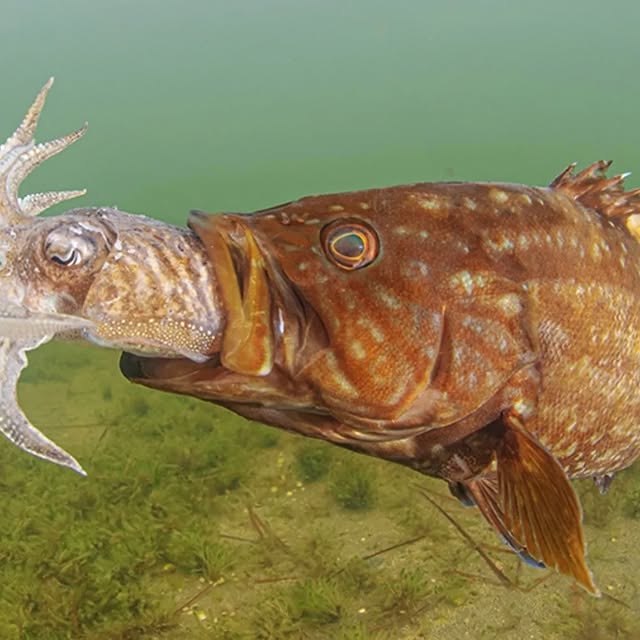
Los serránidos, como este gitano (Mycteroperca rubra) son una familia de peces bastante amplia en aguas del Mediterráneo. Meros, serranos, chernas, abadejos, merillos, etc., son algunos de sus representantes. Los meros, como todos los serránidos, son carnívoros y se alimentan de cualquier cosa viva, desde gusanos, moluscos y crustáceos, hasta peces. Pero uno de sus bocados favoritos son los cefalópodos, como los pulpos o las sepias, y es que simplemente se vuelven locos cuando se topan con un ejemplar (un claro ejemplo se puede observar en las imágenes). Serranidae, like this gypsy (Mycteroperca rubra), are a fairly large family of fish in Mediterranean waters. Groupers, groupers, groupers, pollocks, etc., are some of its representatives. Groupers, like all serranidae, are carnivorous and feed on anything living, from worms, mollusks and crustaceans to fish. But one of their favorite morsels is cephalopods, such as octopuses or cuttlefish, and they simply go crazy when they come across a specimen (a clear example can be seen in the images).

Close-up Photographer of the Day is @javiermurciarequena •–•–•–•–•–•–•–•–•–•–•–•–•–• 💬 ‘I will never tire of saying that the blue crab (Callinectes sapidus) is one of the most aggressive, strong and powerful animals I have ever seen underwater. It is even capable of jumping in case of danger, and its pincers are very powerful, sharp and cutting. The lack of a wide spectrum of natural predators (such as large cephalopods like octopuses or cuttlefish) makes this crab one of the most harmful animals in the coastal lagoon of the Mar Menor. Apart from being a good hunter (it eats almost everything) it also takes advantage of discards from fishing boats. On this occasion I caught a huge male red-handed who was eating two dead fish that some fishermen had just thrown away. Even so, he didn't let go and even got into a defensive position in my presence. The truth is that it is a harmful animal, but at the same time beautiful!!! More info: www.javiermurcia.es’ •–•–•–•–•–•–•–•–•–•–•–•–•–• ⭕ Please offer your congratulations to our Close-up Photographer of the Day @javiermurciarequena in the comments below! And remember to check out Javier Murcia Requena's page for more astonishing underwater photography. •–•–•–•–•–•–•–•–•–•–•–•–•–• *SOMETHING BEAUTIFUL Theme Month* • Enter the CUPOTY CHALLENGE at www.cupoty.com or through the link on our bio and you could win £300 and be featured in @ap_magazine (Amateur Photographer). Supported by @affinitybyserif. Register to enter by Saturday 30th November. • Tag your SOMETHING BEAUTIFUL themed shots with #cupotybeauty to get featured on this page throughout November. •–•–•–•–•–•–•–•–•–•–•–•–•–• #biosapiens #uwphotosociety #uwmacro #uwmacrophotography #divermag #uwpic #wetpixel #oceancreatures #scubadivermag #underwater_is_life #uwart #underwaterart #creatures_from_the_deep #underwaterlicious #kings_underwater #nuts_about_nature #macro_perfection #naturfotografie_deutschland #BBCWildlifePOTD #macroworld_tr #passion_in_macro #macro_freaks #macro_highlight #smallworldlovers #gdtfoto

Llegan buenas noticias desde Francia, seguimos en racha…Un año más, muy contento de formar parte del Festival Photo Montier (con dos imágenes premiadas) y ya son varios años con fotos premiadas en uno de los concursos más populares de naturaleza de toda Europa. Todo un privilegio y para mí especialmente al premiarme con dos imágenes, una en la categoría de otros animales y otra en la categoría de conservación, ya que suelo trabajar en esa disciplina tan importante para mejorar nuestro medio natural. Las imágenes premiadas son todo un espectáculo… Descubre ahora a los ganadores del Concurso Fotográfico Montier 2024 en esta página https://www.photo-montier.org/en/competition/2024-awards/ Good news from France, we are still on a roll… Once again, I am very happy to be part of the Photo Montier Festival (with two award-winning images) and it has been several years since I last won award-winning photos in one of the most popular nature competitions in all of Europe. A real privilege, and for me especially to be awarded two images, one in the other animals category and another in the conservation category, since I usually work in this discipline that is so important to improve our natural environment. The award-winning images are quite a spectacle… Discover the winners of the Montier 2024 Photo Competition now on this page https://www.photo-montier.org/en/competition/2024-awards/ www.javiermurcia.es #javiinthesea #javiermurcia #marelux

La aguja imperial (Tylosurus acus imperialis) es una especie poco estudiada. Ocasionalmente, se acerca a zonas poco profundas, sobre todo cuando caza y persigue a sus presas. Se trata de un pez grande que puede llegar a medir un metro y medio, y presenta unos dientes muy afilados ideales para capturar pequeños peces. Entre ellos se encuentran los peces voladores y cupleidos, como sardinas o alachas, y chirretes (Atherina sp) y mujilidos en lagunas costeras y desembocadura de ríos. Se trata de una especie poco apreciada debido a que su carne presenta un color verdoso, por ello su mercado es muy limitado y escaso. The imperial needlefish (Tylosurus acus imperialis) is a little-studied species. Occasionally, it approaches shallow areas, especially when hunting and chasing its prey. It is a large fish that can reach a meter and a half in length, and has very sharp teeth ideal for catching small fish. Among them are flying fish and cupleids, such as sardines or sardines, and chirretes (Atherina sp) and mujilids in coastal lagoons and river mouths. It is a little-appreciated species because its meat has a greenish color, which is why its market is very limited. www.javiermurcia.es #javiinthesea #javiermurcia #marelux #marmenor #peces #oceanograficvalencia

Los cefalópodos, los grandes depredadores de nuestros mares, son auténticas máquinas de cazar. Este grupo animal no solo ostentan un elevado valor socioeconómico, sino que también juega un papel fundamental en nuestros ecosistemas marinos siendo presa de multitud de especies (desde peces a cetáceos hasta incluso otros cefalópodos, como se aprecia en la imagen) a la vez que un incansable depredador de muchas otras. De hecho, los cefalópodos son máquina diseñada para estar en constante movimiento, alcanzar la madurez y reproducirse en menos de un año, a lo sumo dos, por lo que requiere un constante aporte energético; tienen que comer mucho, y muy rápido. En consecuencia, parece innegable que la depredación juega un papel crucial en la rápida e intensa vida de estos curioso animales. Esta imagen muestra una batalla feroz entre dos de los depredadores más letales de nuestras cosas, la sepia y el pulpo… ¿quién saldrá victorioso de este reyerta? Cephalopods, the great predators of our seas, are authentic hunting machines. This animal group not only has a high socioeconomic value, but also plays a fundamental role in our marine ecosystems, being prey for many species (from fish to cetaceans and even other cephalopods, as can be seen in the image) as well as a tireless predator of many others. In fact, cephalopods are machines designed to be in constant movement, reach maturity and reproduce in less than a year or two, which requires a constant energy supply; they have to eat a lot and very quickly. Consequently, it seems undeniable that predation plays a crucial role in the fast and intense life of these curious animals. This image shows a fierce battle between two of the most lethal predators of our world, the cuttlefish and the octopus... who will win? www.javiermurcia.es #javiinthesea #javiermurcia #marelux #oceanografic #orcatorch #portfolionatural #cefalopodos #cefalópodos #mediterraneansea

Cuando hablamos de un endemismo, hablamos de una joya natural. Nuestro mar es rico en especies endémicas, y entre ellas cabe destacar, por su gran diversidad, a varias especies de gobios. En la imagen se muestra a dos de ellas, el glotón del gobio zebra (Zebrus zebrus) y el esquivo gobio de arena (Pomatoschistus marmoratus). El primero es un pez solitario y difícil de ver. Durante la época de reproducción, entre junio y julio, se vuelven muy agresivos y territoriales, y es una especie carnívora que se alimenta de pequeños peces -y no tan pequeños- y de invertebrados. Puede confundirse con el gobio de Miller (Millerigobius macrocephalus). El gobio de arena sin embargo es más abundante, pero debido a su coloración terrosa no es nada fácil de observar. Podemos encontrarlo en aguas poco profundas. Ambas especies toleran muy bien las aguas salobres e hipersalinas y puede aparecer en lagunas costeras, como en este caso, en el Mar Menor. Esta imagen forma parte de la colección de fotos del nuevo calendario del 2025 When we talk about an endemic species, we are talking about a natural jewel. Our sea is a sea rich in endemic species, and among them, it is worth highlighting, due to their great diversity, several species of goby. The image shows two of them, the gluttonous zebra goby (Zebrus zebrus) and the elusive sand goby (Pomatoschistus marmoratus). The first is a solitary fish and difficult to see. During the breeding season, between June and July, they become very aggressive and territorial, and it is a carnivorous species that feeds on small fish - and not so small - and invertebrates. It can be confused with the Miller's goby (Millerigobius macrocephalus). The sand goby, however, is more abundant, but due to its earthy colouring it is not at all easy to observe. We can find it in shallow waters. Both species tolerate brackish and hypersaline waters very well and can appear in coastal lagoons, as in this case, in the Mar Menor. This image is part of the photo collection of the new 2025 calendar www.javiermurcia.es #javiinthesea #javiermurcia #marelux #portfolionatural #oceanograficvalencia #orcatorch #balkysub #marmenor #fish #saga
Similar Influencers
R¥๐ท™ (Jo)
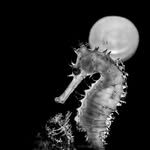
Shinto K Anto

Dr Leo’ Mrs - Jennifer 惠娟

Monako Yacht Charter
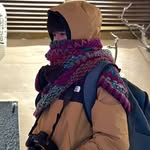
Yun


Eugene Lim
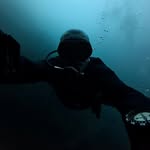
𝐃𝐖𝐀𝐘𝐍𝐄 𝐒𝐄𝐀𝐇
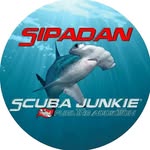
Scuba Junkie Sipadan
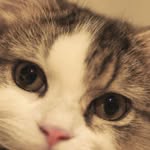
本郷 英幸

Joan Roig 🤿Diving & Travels ✈️

Ishino Shota | 石野 昇太
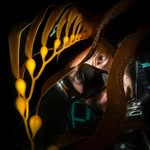
Pat Webster

PADI Travel

submariner
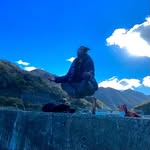
毛利 佑

Jake Mason - Wildlife Videographer

Your Personal Dive Travel Consultant

Lilian Koh
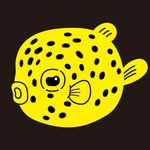
chiku_uw🐠

Rafael Fernandez Caballero

Toni Bertran

Alex Kydd / Ocean, Nature & Travel
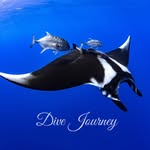
Dive Journey Okinawa

Fish Portraits
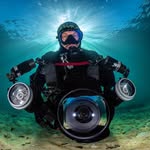
Sam Glenn-Smith

Ikelite
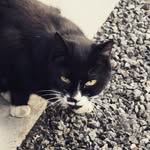
さぶたん

Jake Wilton
